Leader of the House of Commons
| United Kingdom Leader of the House of Commons | |
|---|---|
|
| |
| Office of the Leader of the House | |
| Style | The Right Honourable |
| Inaugural holder | Robert Walpole |
| Formation | 4 April 1721 |
| Website |
www |
The Leader of the House of Commons is a member of the Cabinet of the United Kingdom who is responsible for arranging government business in the House of Commons. This office does not attract a ministerial salary,[1] and as such it is usually held jointly with another ministerial position (often a sinecure). Although at one time the position was usually held by the Prime Minister, in recent years, the post has usually been combined with that of Lord President of the Council (i.e., of the Privy Council); from 2003 to 2014 it had been combined with the office of Lord Privy Seal; from 2014-2015 it was combined with honorific political office of First Secretary of State. The Leader of the House of Commons is assisted by the Deputy Leader of the House of Commons, both of whom are assigned as ministers in the Office of the Leader of the House of Commons.
The House of Commons devotes approximately three quarters of its time to Government business, such as bills introduced by the government and ministerial statements. The Leader of the House, with the parties' chief whips ("the usual channels"), is responsible for organising Government business and providing time for non-government business to be put before the House. The Leader of the House additionally announces the next week's debate schedule in the Business Statement every Thursday.
When there is either no Deputy Prime Minister or First Secretary of State, or either the Deputy Prime Minister or First Secretary of State is unavailable, the Leader of the House may stand in for an absent Prime Minister at Prime Minister's Questions, although this procedure is relatively unusual.
Jointly administered by the Office of the Leader of the House of Commons and the Cabinet Office are the Osmotherly Rules, which set out guidance on how civil servants should respond to parliamentary select committees.[2]
Leaders of the House of Commons since 1721
At times the nominal leadership was held by the Prime Minister but the day-to-day work was done by a Deputy. At other times a Deputy was appointed merely to enhance an individual politician's standing within the government.
18th century
| Name | Portrait | Concurrent office(s) | Tenure | Political Party | Prime Minister | ||
|---|---|---|---|---|---|---|---|
| Robert Walpole |  |
Prime Minister Chancellor of the Exchequer |
4 April 1721 – 6 February 1742 | Whig | Himself | ||
| Samuel Sandys |  |
Chancellor of the Exchequer | 12 February 1742 – 27 August 1743 | Spencer Compton, 1st Earl of Wilmington | |||
| Henry Pelham | 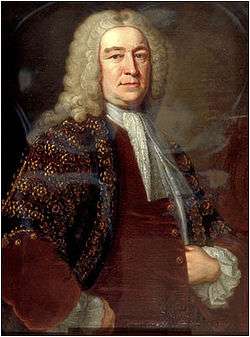 |
Prime Minister Chancellor of the Exchequer |
27 August 1743 – 6 March 1754 | Himself | |||
| Thomas Robinson | 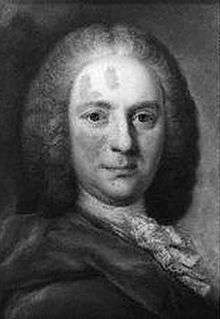 |
Southern Secretary | 23 March 1754 – October 1755 | Thomas Pelham-Holles, 1st Duke of Newcastle | |||
| Henry Fox |  |
14 November 1755 – 13 November 1756 | |||||
| William Pitt the Elder |  |
4 December 1756 – 6 April 1757 | William Cavendish, 4th Duke of Devonshire | ||||
| vacant | April – June 1757 | William Cavendish, 4th Duke of Devonshire (Caretaker) | |||||
| William Pitt the Elder |  |
Southern Secretary | 27 June 1757 – 6 October 1761 | Whig | Thomas Pelham-Holles, 1st Duke of Newcastle | ||
| George Grenville |  |
Treasurer of the Navy | October 1761 – May 1762 | Grenvillite Whig | |||
| Henry Fox |  |
Paymaster of the Forces | May 1762 – April 1763 | Whig | John Stuart, 3rd Earl of Bute | ||
| George Grenville |  |
Prime Minister Chancellor of the Exchequer |
16 April 1763 – 13 July 1765 | Grenvillite Whig | Himself | ||
| Henry Seymour Conway | 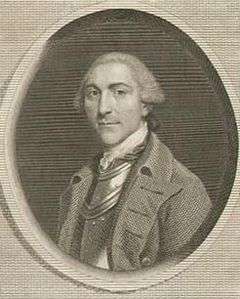 |
Southern Secretary (until May 1766) Northern Secretary (from May 1766) |
July 1765 – 20 October 1768 | Rockinghamite Whig | Charles Watson-Wentworth, 2nd Marquess of Rockingham (until July 1766) | ||
| William Pitt the Elder, 1st Earl of Chatham (from July 1766) | |||||||
| Frederick Lord North |  |
Chancellor of the Exchequer Prime Minister (from 28 January 1770) |
October 1768 – 22 March 1782 | Tory | Augustus FitzRoy, 3rd Duke of Grafton | ||
| Himself | |||||||
| Charles James Fox |  |
Foreign Secretary | 27 March 1782 – July 1782 | Whig | Charles Watson-Wentworth, 2nd Marquess of Rockingham | ||
| Thomas Townshend |  |
Home Secretary | 10 July 1782 – 6 March 1783 | William Petty, 2nd Earl of Shelburne | |||
| Charles James Fox |  |
Foreign Secretary | jointly: 2 April 1783 – 19 December 1783 |
Fox-North Coalition | William Cavendish-Bentinck, 3rd Duke of Portland (figurehead) | ||
| Frederick Lord North |  |
Home Secretary | |||||
| William Pitt the Younger |  |
Prime Minister Chancellor of the Exchequer |
19 December 1783 – 14 March 1801 | Pittite Tory | Himself | ||
19th century
| Name | Portrait | Concurrent office(s) | Tenure | Political Party | Prime Minister | ||
|---|---|---|---|---|---|---|---|
| Henry Addington | 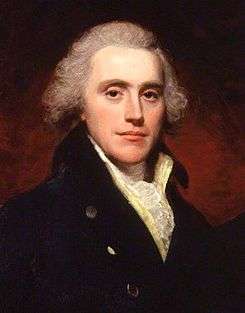 |
Prime Minister Chancellor of the Exchequer |
17 March 1801 – 10 May 1804 | Pittite Tory | Himself | ||
| William Pitt the Younger |  |
Prime Minister Chancellor of the Exchequer |
10 May 1804 – 23 January 1806 (died) | Himself | |||
| Charles James Fox |  |
Foreign Secretary | February – 13 September 1806 (died) | Whig (Ministry of All the Talents) |
William Grenville | ||
| Charles Grey, Viscount Howick |  |
Foreign Secretary | September 1806 – 31 March 1807 | ||||
| Spencer Perceval |  |
Chancellor of the Exchequer Chancellor of the Duchy of Lancaster Prime Minister (from October 1809) |
April 1807 – 11 May 1812 (died) | Tory | William Cavendish-Bentinck, 3rd Duke of Portland | ||
| Himself | |||||||
| Robert Stewart, Viscount Castlereagh (inherited as 2nd Marquess of Londonderry in 1821) | |
Foreign Secretary | June 1812 – 12 August 1822 (died) | Robert Jenkinson, 2nd Earl of Liverpool | |||
| George Canning |  |
Foreign Secretary (until April 1827) | 16 September 1822 – 8 August 1827 (died) | Canningite Tory | |||
| Prime Minister Chancellor of the Exchequer (both from April 1827) |
Himself | ||||||
| William Huskisson |  |
War & Colonial Secretary | 3 September 1827 – 21 January 1828 | F. J. Robinson, 1st Viscount Goderich | |||
| Robert Peel |  |
Home Secretary | 26 January 1828 – 16 November 1830 | Tory | Arthur Wellesley, 1st Duke of Wellington | ||
| John Spencer, Viscount Althorp |  |
Chancellor of the Exchequer | 22 November 1830 – 14 November 1834 | Whig | Charles Grey | ||
| William Lamb, 2nd Viscount Melbourne | |||||||
| Robert Peel |  |
Prime Minister Chancellor of the Exchequer |
10 December 1834 – 8 April 1835 | Conservative | Himself | ||
| John Russell | 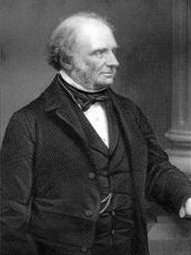 |
Home Secretary (until August 1839) War & Colonial Secretary (from 30 August 1839) |
18 April 1835 – 30 August 1841 | Whig | William Lamb, 2nd Viscount Melbourne | ||
| Robert Peel |  |
Prime Minister | 30 August 1841 – 29 June 1846 | Conservative | Himself | ||
| John Russell |  |
Prime Minister | 30 June 1846 – 21 February 1852 | Whig | Himself | ||
| Benjamin Disraeli |  |
Chancellor of the Exchequer | 27 February – 17 December 1852 | Conservative | Edward Smith-Stanley, 14th Earl of Derby | ||
| John Russell |  |
Foreign Secretary (until February 1853) Minister without Portfolio (February 1853–June 1854) Lord President of the Council (from June 1854) |
28 December 1852 – 30 January 1855 | Whig (Coalition) |
George Hamilton-Gordon, 4th Earl of Aberdeen | ||
| Henry John Temple, 3rd Viscount Palmerston | 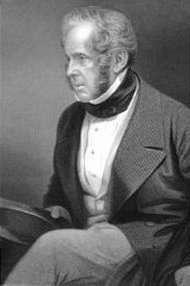 |
Prime Minister | 6 February 1855 – 19 February 1858 | Whig | Himself | ||
| Benjamin Disraeli |  |
Chancellor of the Exchequer | 26 February 1858 – 11 June 1859 | Conservative | Edward Smith-Stanley, 14th Earl of Derby | ||
| Henry John Temple, 3rd Viscount Palmerston |  |
Prime Minister | 12 June 1859 – 18 October 1865 (died) | Liberal | Himself | ||
| William Ewart Gladstone |  |
Chancellor of the Exchequer | October 1865 – 26 June 1866 | John Russell | |||
| Benjamin Disraeli |  |
Chancellor of the Exchequer (until February 1868) | 6 July 1866 – 1 December 1868 | Conservative | Edward Smith-Stanley, 14th Earl of Derby | ||
| Prime Minister (from February 1868) | Himself | ||||||
| William Ewart Gladstone |  |
Prime Minister Chancellor of the Exchequer (from August 1873) |
3 December 1868 – 17 February 1874 | Liberal | Himself | ||
| Benjamin Disraeli |  |
Prime Minister | 20 February 1874 – 21 August 1876 | Conservative | Himself | ||
| Stafford Northcote | 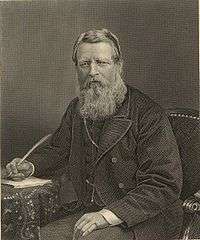 |
Chancellor of the Exchequer | 21 August 1876 – 21 April 1880 | Benjamin Disraeli, 1st Earl of Beaconsfield | |||
| William Ewart Gladstone |  |
Prime Minister Chancellor of the Exchequer (until December 1882) |
23 April 1880 – 9 June 1885 | Liberal | Himself | ||
| Michael Hicks-Beach | .jpg) |
Chancellor of the Exchequer | 24 June 1885 – 28 January 1886 | Conservative | Robert Gascoyne-Cecil, 3rd Marquess of Salisbury | ||
| William Ewart Gladstone |  |
Prime Minister Lord Privy Seal |
1 February – 2 July 1886 | Liberal | Himself | ||
| Randolph Churchill | 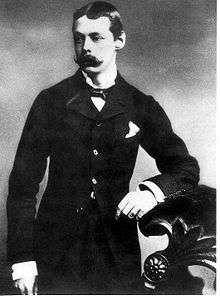 |
Chancellor of the Exchequer | 3 August 1886 – 14 January 1887 | Conservative | Robert Gascoyne-Cecil, 3rd Marquess of Salisbury | ||
| W. H. Smith | .jpg) |
First Lord of the Treasury | 17 January 1887 – October 1891 | ||||
| Arthur Balfour |  |
First Lord of the Treasury | October 1891 – 11 August 1892 | ||||
| William Ewart Gladstone |  |
Prime Minister Lord Privy Seal |
15 August 1892 – 2 March 1894 | Liberal | Himself | ||
| William Vernon Harcourt | 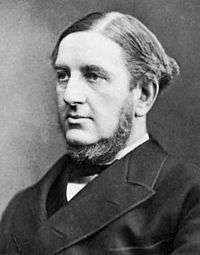 |
Chancellor of the Exchequer | 2 March 1894 – 21 June 1895 | Archibald Primrose, 5th Earl of Rosebery | |||
| Arthur Balfour |  |
First Lord of the Treasury Prime Minister (from 12 July 1902) Lord Privy Seal (14 July 1902–17 October 1903) |
29 June 1895 – 4 December 1905 | Conservative | Robert Gascoyne-Cecil, 3rd Marquess of Salisbury | ||
| Himself | |||||||
Edwardian and wartime
| Name | Portrait | Concurrent office(s) | Tenure | Political Party | Prime Minister | ||
|---|---|---|---|---|---|---|---|
| Henry Campbell-Bannerman | 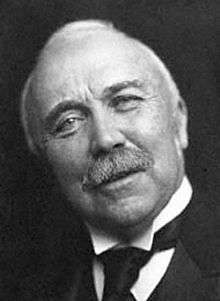 |
Prime Minister | 5 December 1905 – 5 April 1908 | Liberal | Himself | ||
| H. H. Asquith |  |
Prime Minister War Secretary (30 March – 5 August 1914) |
5 April 1908 – 5 December 1916 | Liberal (Wartime coalition 1915–1916) |
Himself | ||
| Bonar Law |  |
Chancellor of the Exchequer (until 10 January 1919) Lord Privy Seal (from 10 January 1919) |
10 December 1916 – 23 March 1921 | Conservative (Coalition) |
David Lloyd George | ||
| Austen Chamberlain |  |
Lord Privy Seal | 23 March 1921 – 19 October 1922 | ||||
| Bonar Law |  |
Prime Minister | 23 October 1922 – 20 May 1923 | Conservative | Himself | ||
| Stanley Baldwin |  |
Prime Minister Chancellor of the Exchequer (until August 1923) |
22 May 1923 – 22 January 1924 | Himself | |||
| Ramsay MacDonald |  |
Prime Minister Foreign Secretary |
22 January – 3 November 1924 | Labour | Himself | ||
| Stanley Baldwin |  |
Prime Minister | 4 November 1924 – 4 June 1929 | Conservative | Himself | ||
| Ramsay MacDonald |  |
5 June 1929 – 7 June 1935 | Labour | Himself | |||
| National Labour (National Govt 1931–1935) |
|||||||
| Stanley Baldwin |  |
7 June 1935 – 28 May 1937 | Conservative (National Govt 1935–1937) |
Himself | |||
| Neville Chamberlain |  |
28 May 1937 – 10 May 1940 | Conservative (National Govt 1937–1939; War Govt 1939–1940) |
Himself | |||
| Winston Churchill |  |
Prime Minister Minister of Defence |
10 May 1940 – 19 February 1942 | Conservative (Wartime coalition) |
Winston Churchill | ||
| Stafford Cripps |  |
Lord Privy Seal | 19 February – 22 November 1942 | Independent (Wartime coalition) | |||
| Anthony Eden |  |
Foreign Secretary | 22 February 1942 – 26 July 1945 | Conservative (Wartime coalition) | |||
| Conservative (Caretaker coalition) | |||||||
Post-War
| Name | Portrait | Concurrent office(s) | Tenure | Political Party | Prime Minister | ||
|---|---|---|---|---|---|---|---|
| Herbert Morrison |  |
Lord President of the Council | 27 July 1945 – 9 March 1951 | Labour | Clement Attlee | ||
| James Chuter Ede |  |
Home Secretary | 9 March 1951 – 26 October 1951 | ||||
| Harry Crookshank | 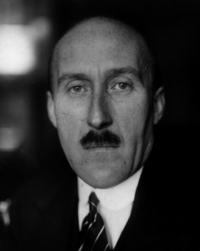 |
Minister of Health (until May 1952) Lord Privy Seal (from 7 May 1952) |
28 October 1951 – 20 December 1955 | Conservative | Winston Churchill | ||
| Anthony Eden | |||||||
| Rab Butler |  |
Lord Privy Seal (until October 1959) Home Secretary (from 14 January 1957) |
20 December 1955 – 9 October 1961 | ||||
| Home Secretary | Harold Macmillan | ||||||
| Iain Macleod | 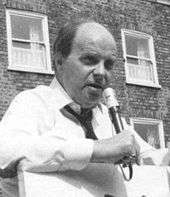 |
Chancellor of the Duchy of Lancaster | 9 October 1961 – 20 October 1963 | ||||
| Selwyn Lloyd |  |
Lord Privy Seal | 20 October 1963 – 16 October 1964 | Alec Douglas-Home | |||
| Herbert Bowden | Lord President of the Council | 16 October 1964 – 11 August 1966 | Labour | Harold Wilson | |||
| Richard Crossman | 11 August 1966 – 18 October 1968 | ||||||
| Fred Peart | 18 October 1968 – 19 June 1970 | ||||||
| Willie Whitelaw |  |
20 June 1970 – 7 April 1972 | Conservative | Edward Heath | |||
| Robert Carr |  |
7 April 1972 – 5 November 1972 | |||||
| Jim Prior | 5 November 1972 – 4 March 1974 | ||||||
| Edward Short | 5 March 1974 – 8 April 1976 | Labour | Harold Wilson | ||||
| Michael Foot | 8 April 1976 – 4 May 1979 | James Callaghan | |||||
| Norman St John-Stevas | Chancellor of the Duchy of Lancaster Minister for the Arts |
5 May 1979 – 5 January 1981 | Conservative | Margaret Thatcher | |||
| Francis Pym |  |
Chancellor of the Duchy of Lancaster (until September 1981) Lord President of the Council (from 14 September 1981) |
5 January 1981 – 5 April 1982 | ||||
| John Biffen | Lord President of the Council (until June 1983) Lord Privy Seal (from 11 June 1983) |
5 April 1982 – 13 June 1987 | |||||
| John Wakeham | Lord Privy Seal (until January 1988) Lord President of the Council (from 10 January 1988) |
13 June 1987 – 24 July 1989 | |||||
| Geoffrey Howe |  |
Lord President of the Council Deputy Prime Minister |
24 July 1989 – 2 November 1990 | ||||
| John MacGregor | Lord President of the Council | 2 November 1990 – 10 April 1992 | |||||
| John Major | |||||||
| Tony Newton | 10 April 1992 – 1 May 1997 | ||||||
| Ann Taylor | 2 May 1997 – 27 July 1998 | Labour | Tony Blair | ||||
| Margaret Beckett |  |
27 July 1998 – 8 June 2001 | |||||
21st century
| Name | Portrait | Concurrent office(s) | Tenure | Political party | Prime Minister | ||
|---|---|---|---|---|---|---|---|
| Robin Cook | 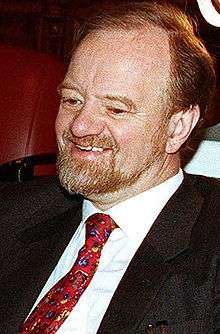 |
Lord President of the Council | 8 June 2001 – 17 March 2003 | Labour | Tony Blair | ||
| John Reid |  |
4 April 2003 – 13 June 2003 | |||||
| Peter Hain |  |
Lord Privy Seal | 11 June 2003 – 6 May 2005 | ||||
| Geoff Hoon | 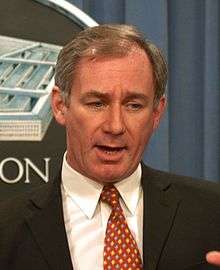 |
6 May 2005 – 5 May 2006 | |||||
| Jack Straw |  |
5 May 2006 – 27 June 2007 | |||||
| Harriet Harman |  |
Lord Privy Seal Minister for Women and Equality |
28 June 2007 – 11 May 2010 | Gordon Brown | |||
| George Young | 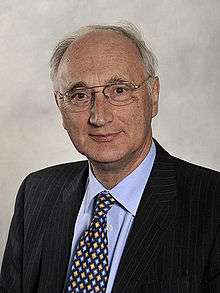 |
Lord Privy Seal | 12 May 2010 – 3 September 2012 | Conservative (Coalition) |
David Cameron | ||
| Andrew Lansley |  |
4 September 2012 – 14 July 2014 | |||||
| William Hague | .jpg) |
First Secretary of State | 14 July 2014 – 8 May 2015 | ||||
| Chris Grayling |  |
Lord President of the Council | 9 May 2015 – present | Conservative | |||
See also
- Leader of the House of Lords
- Speaker of the British House of Commons
- Minister for Parliamentary Business, the equivalent cabinet post in the Scottish Government
References
- ↑ http://www.legislation.gov.uk/ukpga/1975/27
- ↑ Gay, Oonagh (4 August 2005). "The Osmotherly Rules (Standard Note: SN/PC/2671)" (PDF). Parliament and Constitution Centre, House of Commons Library. Archived from the original (PDF) on 30 May 2009. Retrieved 22 May 2009.
.svg.png)